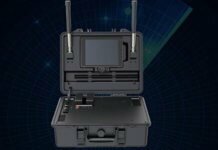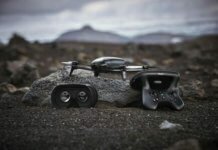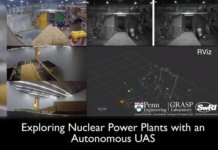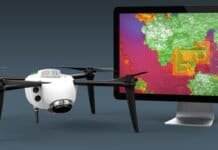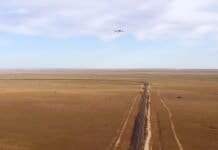A team led by San Antonio-based Southwest Research Institute (SwRI) is developing autonomous unmanned aircraft system (UAS) technology capable of flying into the containment vessels of damaged units at Japan’s Fukushima Daiichi nuclear power station and assessing conditions.
Tokyo Electric Power Co. Holdings Inc. contracted SwRI to explore the use of drones within the containment. Working with the General Robotics, Automation, Sensing and Perception Lab at the University of Pennsylvania (Penn) School of Engineering and Applied Science, SwRI engineers are helping adapt small UAS to autonomously operate within the containment.
“This is a formidable challenge,” says project manager Dr. Monica Garcia, a senior research engineer in SwRI’s intelligent systems division. “The conditions inside the containment at Fukushima Daiichi are quite possibly the most challenging environment that the SwRI-Penn team has had to address. We will be pushing the envelope in terms of the technology.”
According to SwRI, when a 9.0-magnitude earthquake and a tsunami with estimated wave heights of 13 meters struck the power station in 2011, this one-two punch initiated a series of events that ultimately caused three reactors to fail. Since then, a number of ground- and underwater-based robotic systems have been sent inside the containment. However, damage and high radiation levels have limited access to information vital to decontamination and decommissioning efforts, the research organization says.
“The team is adapting high-speed, advanced-mobility drones to collect key information about the current status,” says technical lead Dr. Richard Garcia, also a senior research engineer at SwRI. “This information will play an important role in future decontamination and decommission efforts at Fukushima Daiichi.”
The team successfully demonstrated the core feasibility of their approach in a test fixture at SwRI’s San Antonio campus late last year. During phase one of the project, the team also verified that the UAS components could survive the harsh radiation conditions within the containment.
“As robots get smaller, faster and smarter, this is exactly the kind of problem we want them to address,” adds Dr. Vijay Kumar, the Nemirovsky Family Dean of Penn’s School of Engineering and Applied Science. “Challenges like this are what push research in our field forward.”


